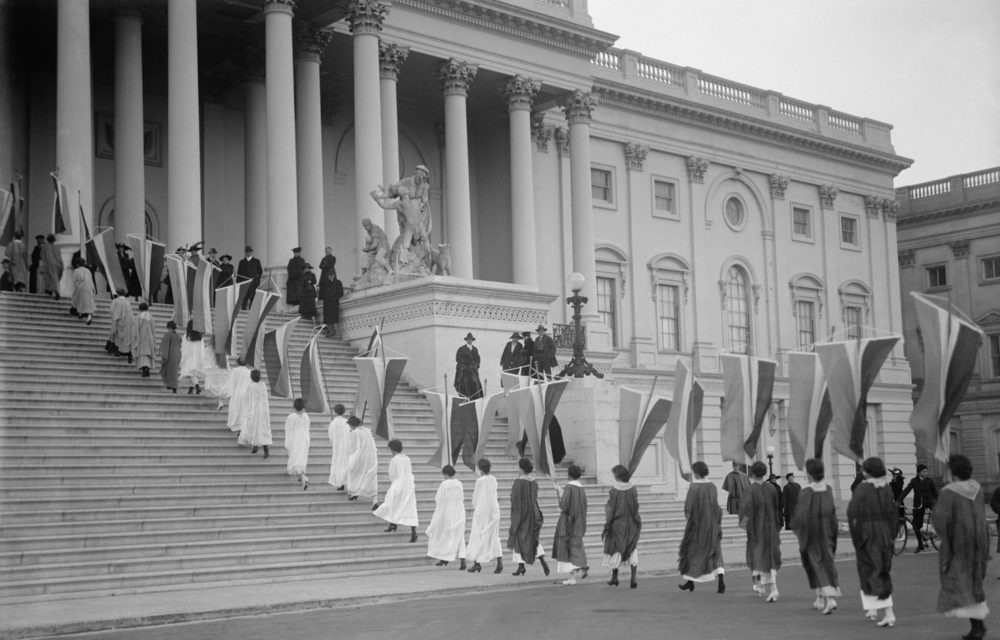Women demonstrated with banners on the steps of the U.S. Capitol in 1917 demanding a right to vote. Their tireless efforts paid dividends on Aug. 18, 1920 with ratification of the 19th Amendment.
The 19th amendment guarantees all American women the right to vote. The Amendment prohibits the states and the federal government from denying the right to vote to citizens of the United States on the basis of sex. This milestone required a lengthy and difficult struggle; victory took decades of agitation and protest.
The 19th Amendment allowed women to help elect progressive policymakers, who in turn enacted policies to benefit women. Policies between 1920 and 1965 not only improved reproductive and economic circumstances for women, but they also enabled women to take advantage of the laws.
After the ratification of the 19th Amendment in 1920, suffragists like Alice Paul knew that their work wasn’t finished. While the government recognized women’s right to vote, many women still faced discrimination. … If ratified, the amendment would guarantee equal rights to all people regardless of their gender.
The women’s efforts were buoyed on Sept. 30, 1918, when President Woodrow Wilson, a leader of the Progressive Movement, delivered a speech before Congress in support of guaranteeing women the right to vote. Although the House of Representatives had approved a 19th constitutional amendment giving women suffrage, the Senate had yet to vote on the measure.
The 19th amendment was a turning point, because it gave women the right to vote; where before women were restricted to their domestic worlds and chores and not allowed nationally to act in a political way.
The Amendment was first drafted in 1878 by Susan B. Anthony and Elizabeth Cady Stanton 30 years after the Seneca Falls Convention, where the idea of women’s suffrage gained prominence in the United States.
In the aftermath of the Women’s Suffrage Movement, women’s economic roles increased in society. Since there was more educational opportunities for women it led more and more women to sense their potential for meaningful professional careers. Also women’s salaries increased but not to the amount that men received.
In every U.S. presidential election since 1964, more women than men have turned out to vote, according to the Washington Post. And since 1980, the two genders have differed markedly in their preferences at the ballot box. Women tend to choose candidates from the Democratic Party more than men do; men do the same with Republicans.
Image Sources
- 19th Amendment: Shutterstock







